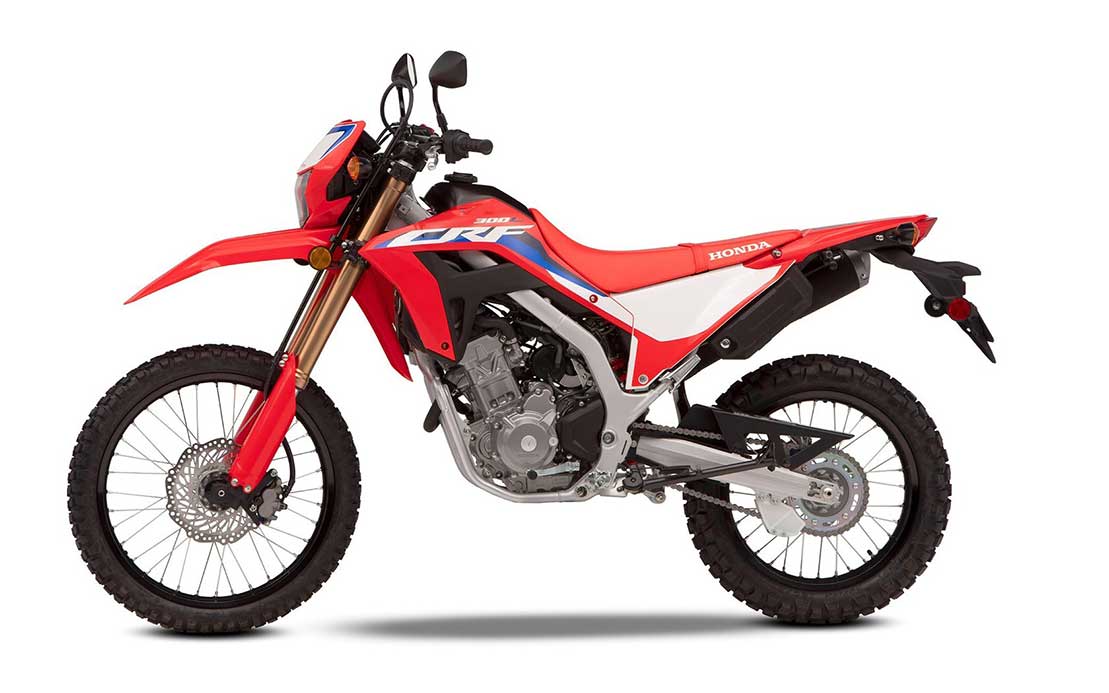
by Vlad Radu from https://www.autoevolution.com
One of the most popular dual-purpose bikes out there returns for the 2021 model year with a series of serious upgrades that range from an increase in engine displacement to improved suspension. Let’s take a closer look at what it has to offer, shall we?
The origins of the CRF300L can be traced back to the 1970s when the XL250S was launched. It was one of the first bikes to successfully combine on-road usability with excellent off-road performance.
The XL range that followed reached legendary status over the years, proving that an easy-to-use, single-cylinder four-stroke engine combined with a capable chassis can create a useful and versatile motorcycle to ride all around the world in various environments. The new CRF300L takes those qualities to another level, offering one of the most capable all-arounder on the market.
It features a larger capacity 286-cc single-cylinder, liquid-cooled DOHC engine. The 14% cubic capacity increase over the previous model is achieved by increasing the bore stroke from 55 to 63 mm (2.2 to 2.5 in.).
The bore size remains the same, at 76 mm (3 in), as does the compression ratio of 10.7:1. The engine’s peak power of 27 hp (20.1 kW) arrives at 8,500 rpm, while the peak torque of 26.6 Nm (19.6 lb-ft) can be reached at 6,500 rpm, making the unit considerably more powerful than its predecessor.
To cope with the increase in power, the gearbox has been heavily revised. Gear ratios 1-5 are shorter, while the 6th gear is taller for better long-distance rides like highway cruises where the new bike can reach a top speed of 132 kph (82 mph).
The addition of an assist/slipper clutch lowers lever load by 20% and manages rear wheel ‘hop’ on quick downshifts, thus providing greater control on- and off-road.
To improve low- to mid-range response, the rpm range most used in day-to-day or off-road riding, the timing of the intake cam, muffler, and ignition have been reworked. Additionally, the air filter has been redesigned, and the exhaust downpipe is 660 grams lighter.
The cooling system has also been revised. It uses a 12.7kW heat-release radiator mounted on the left side of the bike protected by a polypropylene grill. To maintain optimal temperatures, it comes with a thin guide-ring cooling fan.
The new CRF300L is 4 kg (8.8 lbs) lighter than the previous model, with a wet weight of 142 kg (313 lbs). This was achieved by developing a completely new semi-double steel cradle frame.
It features decreased width for the main down tube and across the central bracing tube, along with smaller diameter lower down tubes. Honda claims that these changes result in a 25% reduction of lateral rigidity.
The one-piece cast aluminum swingarm has also been redesigned. It’s narrower behind the pivot point and uses a smooth, cross-sectional shape to create uniform deflection. This makes it 55 grams lighter and improves lateral rigidity by 23%.
The 43-mm (1.7 in) Showa inverted fork gains 10-mm (0.4 in) of stroke to a total of 260-mm (10.3 in). For precise control over any terrain, the spring weight and damping settings have been revised, while the Pro-Link rear suspension now features a 260-mm (10.3 in) axle stroke.
Ground clearance has also been increased to 285-mm (11.2 in) while revisions to the lower frame, engine crankcases, and oil drain plug means the frame and engine sit 20-mm (0.8 in) higher.
The modifications to the engine, chassis, and suspension improve the power to weight ratio by 13%, making for a better ride through various terrain and speeds.
The 2021 Honda CRF300L will be available in Europe next year, but the Japanese manufacturer is yet to release details about prices or its availability in North American markets.
